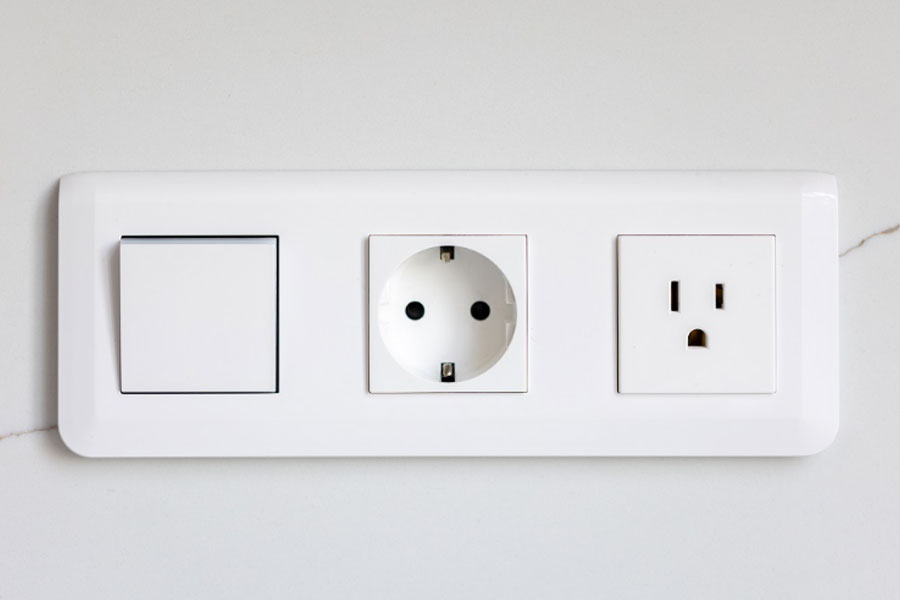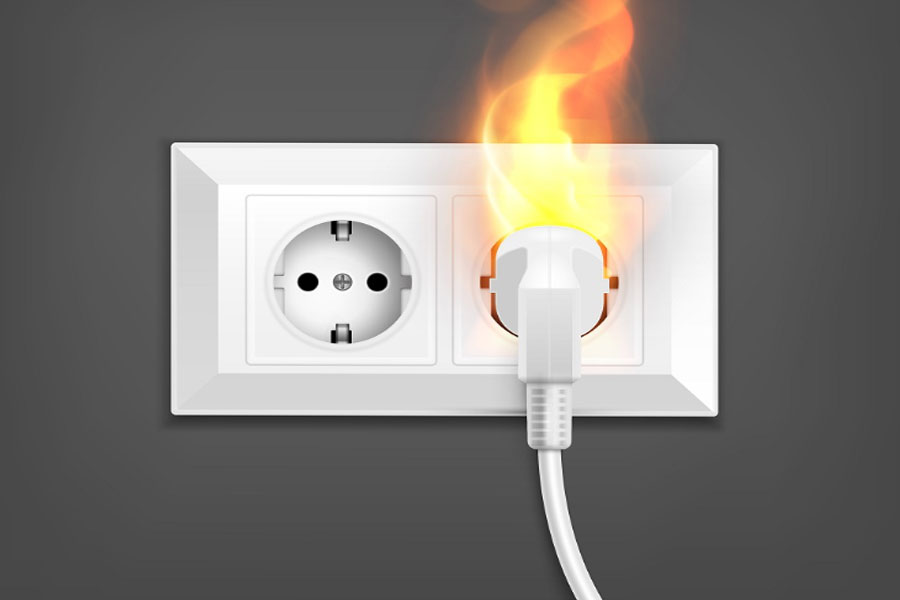Enquire Now
- CALL A PLUMBER
- (925) 478-8073
Enquire Now
 November 16, 2025
November 16, 2025
When you plug in the appliance you like the most, the voltage behind it is generally not on your mind. However, the comparison of outlets with 120V and 240V can influence safety, performance, and energy consumption. Knowing about these outlets can help you to decide the ideal setting for your home and also to avoid incurring unnecessary costs.
Voltage is the force that drives electrical current through conductors. To put it simply, high voltage equates to more energy. In the United States, the majority of residences get 240 volts of electricity from the power company. Then, this power divides into two 120-volt lines and one neutral wire.
The typical voltage supplied to a standard outlet for light bulbs or television sets is 120V. On the other hand, heavy-duty appliances such as dryers, ovens, and air conditioners may need 240V to operate.
Most of the sockets in households in the United States are of 120V. These sockets are used for powering all small and medium-sized devices, like:
They are constructed with user-friendliness and protection as the primary factors. The standard 120V socket has two vertical slots and one round hole for grounding. If the wiring is adequate, you can effortlessly connect devices without any concern about overloads.
One of the main benefits of 120V outlets is their availability. Almost every room has them as a standard. Besides this, during renovation or new construction, electricians can always fit them in without much trouble.
More power is needed for some devices to work correctly. The prominent examples of such are dryers, stoves, and electric water heaters. They require a 240V outlet for proper functioning.
In a 240V outlet, two hot wires are used instead of one. The arrangement gives you twice the voltage and more wattage for the machine that consumes a lot of power. This leads to quicker heating, higher efficiency, and consistent operation.
Though these outlets are pretty similar to 120V ones in appearance, to avoid wrong connections, they have different prong configurations. Always verify the outlet and plug type before buying or installing a new appliance.
A 240V outlet may be perceived as an energy saver when compared to a 120V outlet. The fact is that both the 240V and 120V use almost the same amount of electricity when performing the same task. Nevertheless, 240V systems are able to power up the high-demand appliances more effectively as they need to carry less current to produce the same wattage.
As an example, a dryer working on 240V takes less current, thus there is wire heating and energy loss. This results in better performance and less wear on components over time.
Safety when working with electricity is paramount. Both 120V and 240V outlets can be very dangerous if not handled properly. But at the same time, 240V outlets are more hazardous and therefore require extra care. Wrong installation can result in electrical shocks, fires, or damage to equipment.
Always have a qualified electrician do the wiring and the installation of the outlets. Checking cords and outlets regularly can keep hazards away and increase the life of the appliance.
Here’s a quick summary to help you out:
Knowing your appliance requirements will help you avoid tripping breakers, overheating, and damage.
Experimenting with electricity is not a good idea. A trained electrician ensures your electrical system meets code requirements and supplies the correct voltage to the right places.
At Magnificent Plumbing & Rooter, we often discover that the residents are not familiar with the outlets that their appliances need. Our electrician experts conduct outlet inspection, installation, and upgrading in a safe manner, allowing for proper power distribution throughout the house.
The checking routine can also spot old wiring, loose connections, or signs of electrical overload. This forward-thinking technique is economical and also eliminates the risk of having dangerous electrical problems in the future.

Myth 1: 240V is always more expensive
That is not a fact. The cost of electricity is determined by the total wattage produced and not by the voltage. A dryer that operates on 240V might even turn out to be more power-efficient than one that works on 120V.
Myth 2: 120V outlets can power any appliance
False. Connecting a 240V device to a 120V outlet can result in damage or even a fire.
Myth 3: You can convert outlets easily
It’s more complex than it seems. Changing outlet voltage requires rewiring and circuit adjustments by a professional electrician.
Before buying new appliances, always check the voltage rating. Manufacturers are very clear about whether they require 120V or 240V. Upgrading to modern outlets may look like a minor change, but it has a significant impact on performance and safety.
If you are renovating or adding new rooms, consider the electrical demand of future appliances. This planning will help you avoid costly rewiring later.
If you are looking for new outlets to be installed, existing wiring to be upgraded, or just a professional inspection, Magnificent Plumbing & Rooter is the right partner. The intervention of our certified electricians guarantees that your electrical system is in compliance with the safety and performance standards of the present day.